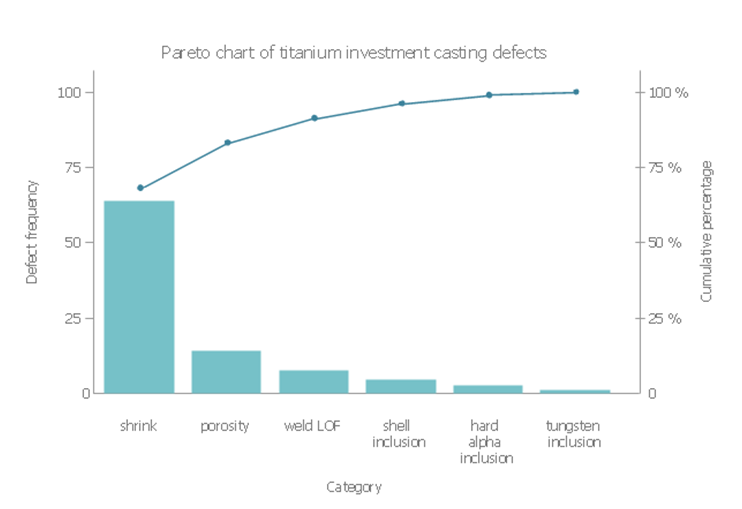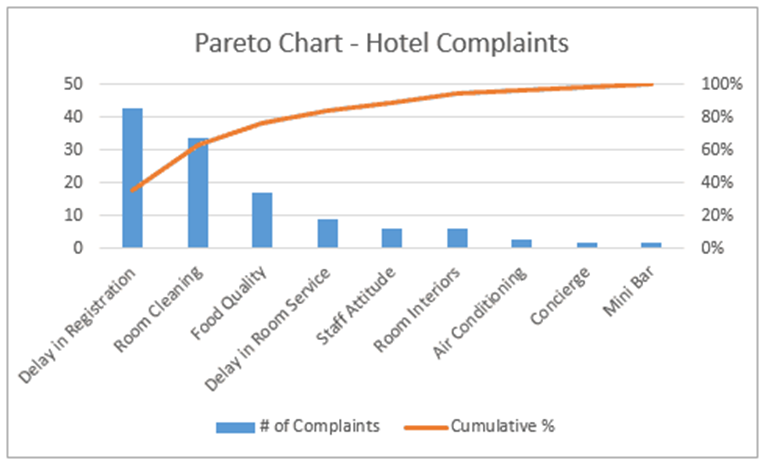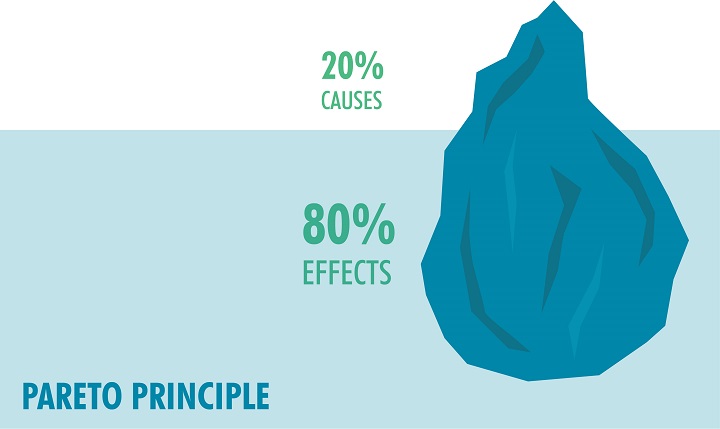![Iceberg view of the Pareto Principle [Source: Teodesk ]](https://fabbaloo.com/wp-content/uploads/2020/05/pareto_img_5eb090f4ce76b.jpg) Iceberg view of the Pareto Principle [Source: Teodesk ]
Iceberg view of the Pareto Principle [Source: Teodesk ]
Charles R. Goulding and Andressa Bonafe of R&D Tax Savers discuss the Pareto Principle as it can be applied to the business of 3D printing.
It should be the goal of all managers to focus their main efforts on the activities that mean the most. Vilfredo Pareto, an Italian engineer, sociologist, economist and philosopher born in 1848 gives us an idea of how to do so. Although he developed many important economic concepts, Pareto is most famous for the 80/20 rule that came to be known as Pareto Principle. A reminder of imbalances between input and output, the rule states that 80 percent of consequences come from 20 percent of the causes. The relevance of the Pareto Principle has been demonstrated across industries and applications.
Wikipedia defines the idea:
“The Pareto principle (also known as the 80/20 rule, the law of the vital few, or the principle of factor sparsity) states that, for many events, roughly 80% of the effects come from 20% of the causes. Management consultant Joseph M. Juran suggested the principle and named it after Italian economist Vilfredo Pareto, who noted the 80/20 connection while at the University of Lausanne in 1896, as published in his first work, Cours d’économie politique. In it, Pareto showed that approximately 80% of the land in Italy was owned by 20% of the population.
It is an axiom of business management that ‘80% of sales come from 20% of clients’.”
Pareto Principle’s Business Applications
The 80/20 Rule has proven to be a valuable tool for promoting business growth.
It allows managers to identify and focus their efforts on 20 percent of the most meaningful business functions, which will provide the best results covering 80 percent of that category. In other words, it enables businesses to target the “vital few” in sales, quality control, training, etc. This notion is crucial for the success of 3D printing companies, as discussed below.
Sales: According to the Pareto Principle, 20 percent of customers represent 80 percent of sales. Through careful analysis of sales data, 3D printing product companies can endeavor to provide top customers with extra service. A study of the characteristics of the “vital few” can also inform expansion efforts and the pursuit of targeted audiences.
It is necessary, however, to be mindful of potential pitfalls. Over-relying on particularly large customers may create excess business risk. Also, while small customers may not generate a significant share of revenue, they are invariably part of the learning process that fuels the expansion into new, high potential markets.
Quality Control: 20 percent of defects cause 80 percent of quality issues. Dr. Joseph Juran, the renowned engineer and management consultant, was the first to recognize that Pareto’s observation held true for a wide range of situations, including problems of quality. The following chart illustrates this application, highlighting the most common defects in titanium casting.

This concept creates major opportunities for 3D printing companies to target clients that require zero-defect performance. Aerospace components and medical devices are great examples of promising areas for growth.
Customer Service: 20 percent of complaint categories make up for 80 percent of total complaints. In an age of instantaneous social media reviews this critical information is crucial for managing business reputation, particularly in a highly competitive industry such as 3D printing. The chart below illustrates the application of this concept to the hotel industry.

Training: The Pareto Principle calls for careful consideration of employee training strategies. If 20 percent of training generates 80 percent of the intended results, it follows that 80 percent of it is not that effective. Targeted and streamlined training programs can help 3D printing companies optimize their resources and increase returns.
How the R&D Tax Credit Illustrates the 80/20 Rule
Enacted in 1981, the now permanent Federal Research and Development (R&D) Tax Credit allows a credit that typically ranges from 4%-7% of eligible spending for new and improved products and processes. Qualified research must meet the following four criteria:
-
Must be technological in nature
-
Must be a component of the taxpayer’s business
-
Must represent R&D in the experimental sense and generally includes all such costs related to the development or improvement of a product or process
-
Must eliminate uncertainty through a process of experimentation that considers one or more alternatives
Eligible costs include US employee wages, cost of supplies consumed in the R&D process, cost of pre-production testing, US contract research expenses, and certain costs associated with developing a patent.
On December 18, 2015, President Obama signed the PATH Act, making the R&D Tax Credit permanent. Since 2016, the R&D credit has been used to offset Alternative Minimum Tax (AMT) for companies with revenue below $50MM and, startup businesses can obtain up to $250,000 per year in payroll tax cash rebates for up to five years.
The U.S. R&D tax credit law uses an 80/20 statutory rule according to which once a technical person spends 80 percent of their time on R&D tax credit eligible activities, then 100 percent of their salary may be included in the R&D calculation.
The concept here is that 20 percent represents the necessary share of non-technical tasks in which innovators must engage in order to support high performance in the remainder of their time.
Conclusion
The Pareto Principle has tried and true applications that can greatly benefit the 3D printing industry. Targeting the “vital few” is a valuable strategy in increasing a company’s chances of success. These changes can be further enhanced by taking advantage of R&D tax credits to support innovated activities.

